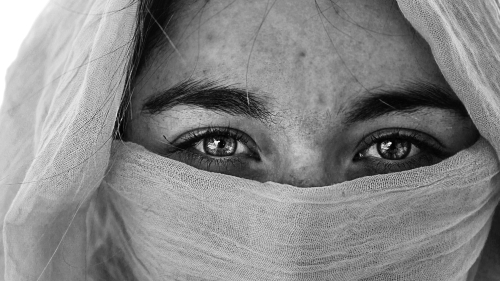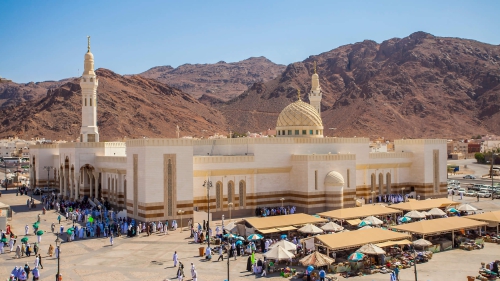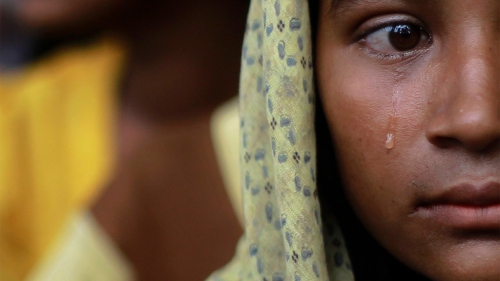Status of Women During the Time of Caliphate

Since the advent of Islamic history, women had been a fundamental force in the feat of moving Islam and Muslims into the realm of progress. Looking back, we find an inspiring past: the Golden Age of Islam. Throughout the history of this era, it was evident that women had taken their place in the annals of Muslim thought and progress; thus being part of the driving force that launched Muslims into glory.
Al Biruni, who credited his wife as the reason for him completing his work; Ibn Arabi whose two main Sufi masters were women whom he harbored immense respect for; and Um Sufian Al Thawri who was the driving force of encouragement behind Sufian Al Thawri's pursuit of knowledge; are testaments that for many of the most influential men in history, there were certain women who had been the underbelly for their success.
Aside from being the alcove of encouragement for men, women during the Caliphate were also known for their contributions in various realms such as education, administration, and science. From the historical accounts, it can be seen that during the Caliphate, the status of women was on the top rung of the social ladder.
The contribution of elite women throughout Islamic history had namely been the endowment of madrasas, mosques, and ribats as expressions of piety and charity. Such was the case with many influential women in Islamic history. To name a few: Fatima and Mariam al Fihri (9th C); Turkan (13th C); Al Adur Al Karima (14th C); and, Buran Bent Muhammad (15th C).
As early as 9th century under the Islamic State, a woman named Fatima al Fihri is known for creating the oldest academic degree-granting university in existence today. She was a young, educated, and envisioned woman who had the notion to devote her inherited fortune into pious work that would benefit the collective ummah. Her project of philanthropy: the University of al-Qarawiyyin; stemmed from this very notion.
From the 10th to the 12th century, the University of al-Qarawiyyin evolved from a mosque into a developed university which became a paramount center of education. Al-Qarawiyyin is the portrait of pulchritude of how the Muslim faith amalgamates the spiritual with the intellectual. The legacy of this remarkable institution of knowledge boasts more than 1000 years of legacy of attracting students from all over the world to study sciences, languages, and Islamic studies.
Similarly, Mariam al Fihri had a philanthropic project of her own stemming from the same notion: to move the ummah into the realm of progress and 'ilm. Mariam al Fihri was responsible for the construction of the al-Andalus mosque. Present day, Mariam and Fatima al Fihri are considered some of the most influential Muslim women of all times. Their legacies surpassed the framework of time, their generosity and foresight carved their names in the indelible ink of history.
Other remarkable women in pioneering the field of education during the era of Caliphate include women like Turkan and Al Adur Al Karima; both of whom established madrasas and schools as well as women like Buran bent Muhammad who was known as the Woman of Knowledge from Aleppo, and who used to copy books in order to learn and impart knowledge.
It was reported that throughout Islamic history, there was approximately 8000 female hadith scholars (muhaddithahs). Two of the most notable: A'isha bint Muhammad (723AH-816AH) and Zaynab bint al-Kamal (646AH-740AH) lived during the era of flourishing Islamic scholarship. They are both regarded as archetypes in the world of Mamluk female education and hadith transmission. The socio-economic pluralism of that era enabled women like A'isha and Zaynab to participate in the educational system.
Among the traffic of hadith scholars in 12th century Damascus was Zaynab bint al-Kamal. She was noted for the ijazas or numerous certificates of hadith transmission that she accumulated in her lifetime; starting from her career as a muhaddithah at the age of one. An anecdote of Ibn Hajar al-Asqalani reported that at the time of her death, she had in her possession a camel load of ijazas.
Similarly, A'isha bint Muhammad began her career at a young age, as early as the age of four. Her path to acquisition of hadith was paved by other remarkable muhaddithahs of Damascus such as Sitt al-Fuqaha' bint Ibrahim (d.726), Zaynab bint Yahya (d.735), and Zaynab bint al-Kamal (d.740). A'isha was noted for her contributions in transmitting a number of works including the Sahih collections of Imam Bukhari and Imam Muslim.
During the Islamic Golden Age dating from 8th century up to 16th century, the labour force in the Caliphate were reported to range from various ethnographic and religious backgrounds with both men and women involved in diverse fields of economic activities and occupations. Equal to men, women were also the engine behind the socio-economic pluralism of the Caliphate. With the involvement of women in all three economic sectors, Muslim labour force was nudged into the direction of advancement.
In the primary sector, women farmers were among those who fueled the Muslim Agricultural Revolution. An example of women's advancement in the primary sector is A'isha RA's student, Amra bint Abdul Rehman (7th C) who was an authority on things like the effect of crop damage on the sale of agricultural produce and the ban on selling unripe fruits.
In the secondary sector, women had a monopoly over certain branches of the textile industry. In the tertiary sector, acting as investors, doctors, guild presidents, and scholars, women contributed to the progressive and flourishing traffic of socio-economic prosperity in the Islamic Golden Age.
In the field of medicine, women like Al-Shifa bint Abdullah (7th) and Rofaida Aslamiah (8th C) fronted the line as the firsts of women pioneers in the field of medicine. Al-Shifa was well known for her excellent expertise in medicine and in her time, she conducted training sessions to others to impart her knowledge in medicine. Later, Al-Shifa was appointed by Caliph Umar as a Chief inspector of the Medina market.
Rofaida Aslamiah who was the first professional nurse in Muslim history who started her own initiative in public health nursing and later went out to her community endeavoring to prevent diseases before they occurred. Rofaida also trained nurses and managed training sessions.
In the broad playground of Science and Technology, the Islamic women pioneers were Miriam al-Ijli al Asterlabia (10th C) who designed and manufactured astrolabes and Sutatita al Mahamli (10th C) who invented solutions to some equations that demonstrated a logical approach in Mathematics.
There was a gradual emergence of marginalization in society that excluded the masses from politics and consequently nudged women into inevitable seclusion. Stemming from this social phenomena, women sovereigns came into existence. These women sovereigns braved through the political tension and challenged the status quo by assigning to themselves the imperial positions usually assumed by men.
To name a few of these brave, determined women: Shajarat Al-Durr of Egypt (d.1259) who became the first woman in Islam to assume the throne on her right; Noor Jehan Empress of the Mughal Empire (17th C) who was the imperial influence behind the Mughal throne; and Al Adur Al Karima (14th C), wife of the Yemen King, who ruled herself for fourteen months.

















